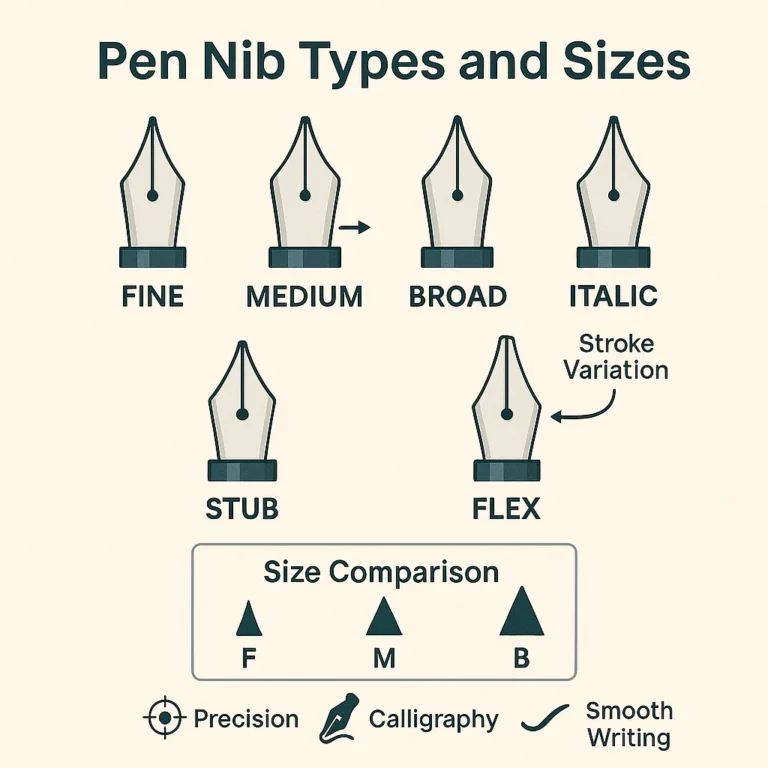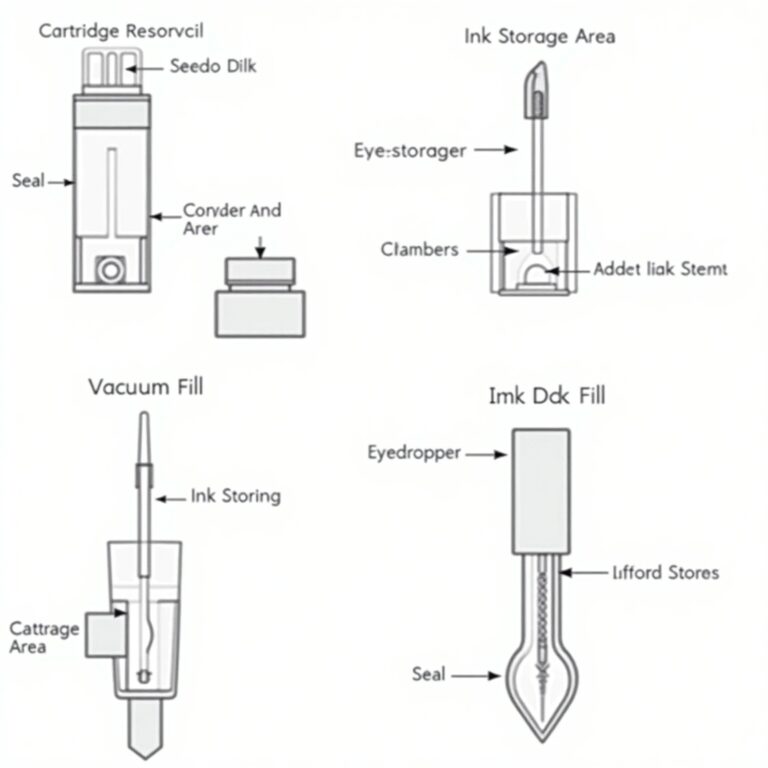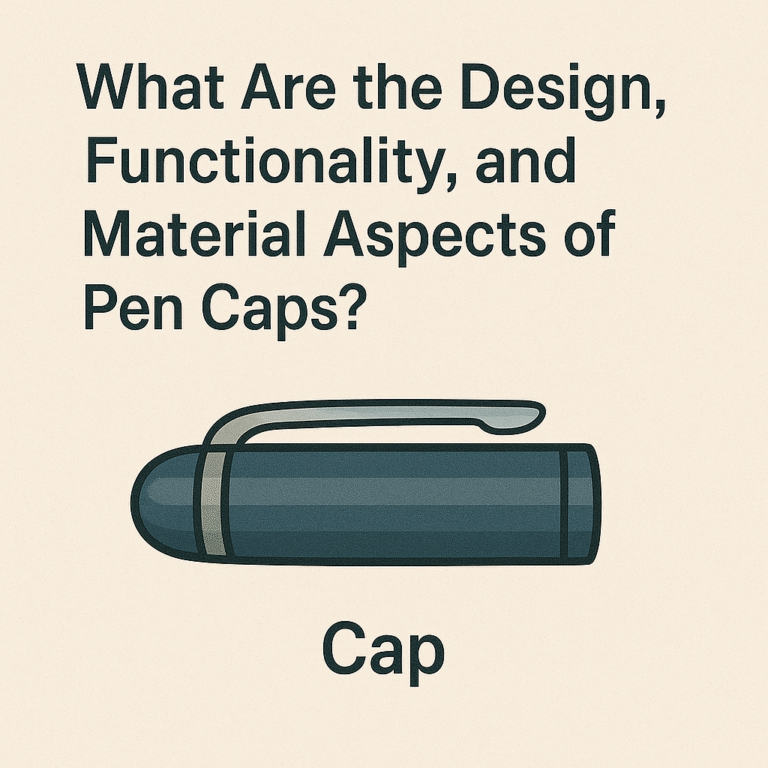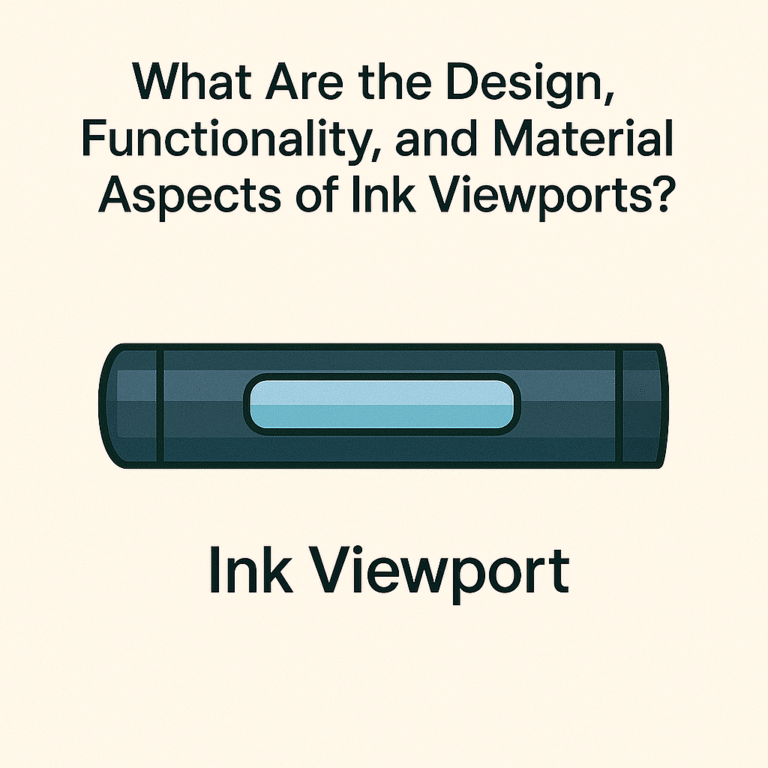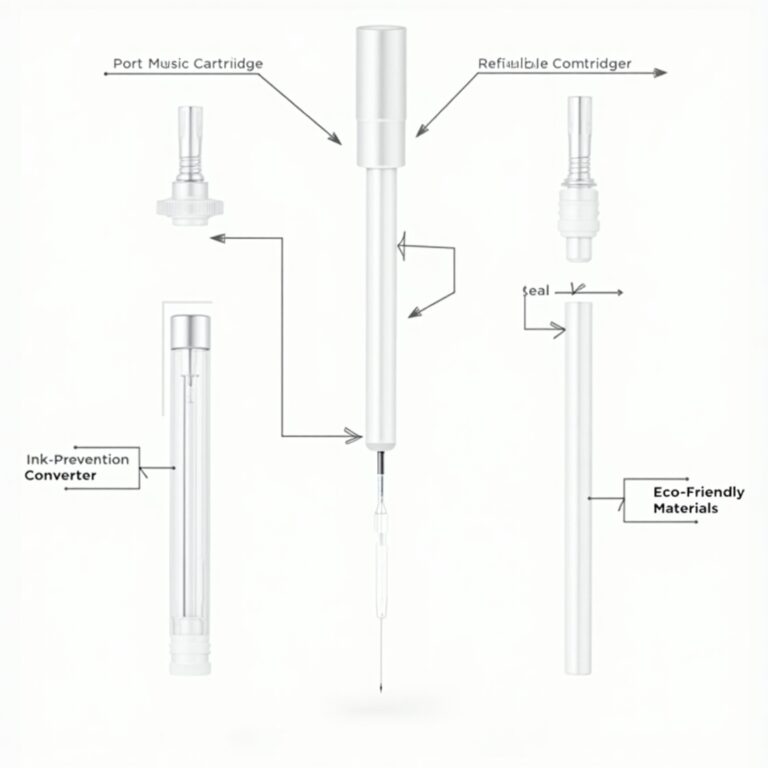Pen Ink Tube: Types, Writing Function, Compatibility And maintenance tips Explained

The pen ink tube is the core component that stores and delivers ink in ballpoint and gel pens. Its design affects how smoothly the pen writes, how compatible it is with different pen bodies, and how long it lasts. Ink tubes come in various types—standard, pressurized, and refillable—each serving specific writing needs. Knowing their function, compatibility, and how to maintain them ensures consistent performance and longer pen life.
Key Takeaways
- Pen inks come in types like ballpoint, rollerball, gel, and fountain. Each type feels different when you write.
- Quick-dry inks prevent smudges, making them ideal for left-handed writers. Waterproof inks protect important documents.
- Storing pens upright stops leaks. Refilling ink is cost-effective and eco-friendly. Make sure to refill correctly.
- Use the right ink tube size and type for your pen to ensure leak-free and smooth writing.
- Clean pens regularly to prevent clogs. Use water or mild cleaners based on the ink type.

Types of Pen Ink Tubes

Pen ink tubes, like ballpoint and gel, affect your writing on paper. Each type provides a distinct feel.
Ballpoint Pen Ink Tubes
Oil-based ink in ballpoint pen tubes dries quickly, reducing smudges. These pens are great for daily writing because of their durable design and steady ink flow. They feature a small ball that distributes the ink on paper efficiently.
Ballpoint pens come in various sizes and colors, including common blue and black as well as reds and greens. Their long-lasting nature means one refill can write for miles without needing replacement.
Rollerball Pen Ink Tubes
Rollerball pens use water-based ink, making them smoother on paper than ballpoint pens. The fine flow of rollerball ink supports detailed writing and is available in many colors.
Capillary action helps the ink move through the tube onto the paper. However, this ink dries slower compared to the oil-based ink in ballpoints, leading to potential smearing if touched too soon.
To prevent leaks or drying, always cap your rollerball pen after use and store it upright. This keeps the ink fresh and prevents leaks when not in use.
Gel Pen Ink Tubes
Gel pens have water-based ink mixed with pigments and gel. This mixture creates bright and rich colors. These pens work well on all types of paper, including dark or glossy surfaces.
They are great for projects that need clear writing or drawings.
You can find gel pens in metallic, pastel, and vibrant colors. Some gel inks dry to become waterproof. People enjoy using these pens because the ink flows easily. The tip sizes vary from fine to bold, allowing for a range of line thicknesses.
Fountain Pen Ink Cartridges
Fountain pen ink cartridges are small tubes that hold either dye-based or pigment-based ink. They fit easily into fountain pens for quick ink replacement. These cartridges come in various colors, including black, blue, pink, and green.
To use them, just push a cartridge into the pen until it clicks.
Many people prefer these cartridges because they are convenient. There’s no mess from spills as with bottled ink since you don’t need syringes to refill your pen. Each cartridge has enough ink for several pages of writing.
The amount of writing each cartridge can support depends on your writing style and nib thickness—the part of the pen that touches the paper. This makes fountain pen ink cartridges ideal for everyday use at school or work.
Hybrid Ink Tubes
Hybrid ink tubes blend rollerball and ballpoint pen features. They have a special ink formula that offers smooth writing like gel pens and quick drying times like ballpoints. The inks are rich and vibrant, ideal for those who want their writing to pop.
These tubes fit well in multi pens and retractable pens. They work on various paper types without bleeding through or smudging. For quick writers, hybrids reduce resistance, making writing smoother.
Keep them stored right, and they won’t dry out or leak.
Writing Functions of Different Ink Tubes
Different ink types affect writing. Some inks are smooth, some dry quickly, and others are waterproof to make writing last longer on paper.
Smooth Writing Experience
Gel pens glide on paper easily. Ballpoint pens give better control and still move smoothly. Rollerball pens mix these features for an ideal balance.
These writing instruments, including gel, ballpoint, and rollerball pens, have quick-drying ink. Quick drying means less smudging which helps left-handed writers a lot.
Each type of pen has unique qualities for effortless writing.
Quick-Drying Properties
Gel pens and rollerball pens feature quick-drying ink. This type of ink dries fast, avoiding smudges. It’s beneficial for left-handed writers as it prevents the ink from smearing across the page.
Ballpoint pens also have quick-drying properties in their oil-based ink. This ensures documents stay clean and legible, with sharp lines that don’t smear or mess. Quick-drying hybrid inks similarly prevent blots on important papers, making writing clear and efficient without delay for drying.
Water-Resistance Features
Some fountain pen and rollerball pen inks are water-resistant. This feature prevents writing from smearing or washing away when exposed to water, making them ideal for important papers or outdoor use.
Waterproof ink has a special formula that sticks to paper even with water contact.
The Fisher Space Pen is known for its waterproof ink, allowing astronauts to write in space without the ink floating away. On Earth, this means notes stay safe from spills. Pens with waterproof ink ensure long-lasting, clear writing despite any accidents.
Long-Lasting Ink Supply
Gel pens and fountain pens have ink that lasts longer, meaning you don’t need to refill them often. Fountain pen cartridges can keep going for weeks with regular use. This reduces the worry about running out of ink when you need it most.
Gel pens are great for daily heavy writing because they don’t require constant ink replacement. Different pen bodies match with various types of ink tubes, including gel refills and fountain pen inks.
Compatibility of Pen Ink Tubes
Matching pen ink tubes with the right pen depends on the pen’s design, size, and material. Choose between refillable pens or disposable ones for a good fit.
Pen Body Design and Size
The pen body size must match the ink tube. If too large, the ink doesn’t flow well to the nib. If too small, the tube won’t fit. Ballpoint pens, rollerball pens, and fountain pens have different body sizes and designs.
Not every ink tube fits each pen type.
Fountain pens with steel nibs need cartridges that fit their specific design. Ballpoint and gel pens usually use standard refills but require careful selection to write smoothly without any leaks or breaks in line continuity.
Matching ink tube material with the pen ensures uninterrupted writing.
Ink Tube Material Compatibility
Fountain pens use water-based ink cartridges. Ballpoint pens operate with oil-based ink tubes. Gel pens need a special gel refill because each type requires different tube materials for smooth writing and to avoid leaks.
Refillable pens are cost-effective and eco-friendly, needing the correct ink type. Disposable pens are convenient but harm the environment. This information guides your pen and ink choice, ensuring you select what’s best for your needs.
Refillable vs. Disposable Tubes
Refillable tubes are cost-effective and eco-friendly. You purchase them once and refill them with ink repeatedly. These tubes fit in durable pens from brands like Parker Jotter and Speedball.
In contrast, disposable tubes get thrown away when empty. Ballpoint pens, gel pens, and marker pens usually have these one-time use tubes.
The choice between refillable and disposable depends on your writing habits and views on waste. Refillables are suitable for frequent writers concerned about the environment. Disposables suit those who often lose their pens or need inexpensive options for brief tasks.
To ensure your pen stays in good condition, follow proper maintenance tips.
Maintenance tips of Pen Ink Tubes
Store pen ink tubes upright to prevent leaks. Fill them correctly to ensure smooth ink flow and stop drying out.
Proper Storage Tips
Keep pens flat in a cool, dry spot to prevent ink from leaking or drying. Store fountain pens nib up for ready writing. Use clips on ballpoint and gel pens to stop them from rolling off surfaces.
Replace pen refills before they expire.
Cap your pens after use to avoid leaks. Uncapped pens can dry out and reduce writing quality. Now, filling ink tubes cleanly is easy with the right steps.
Steps to Refill Common Ink Tubes
Refilling ink tubes cuts costs and is eco-friendly. Follow these steps:
- Pick the right ink for your pen, like gel ink for gel pens or water-based ink for rollerball pens.
- Set up a clean area to work in. Use paper or a towel to catch drips.
- Ready your tools – you’ll need an ink refill, a syringe or pipette for fountain pens, and maybe pliers if the pen is tight.
- Take out the old ink tube carefully by twisting or pulling apart the pen.
- If you’re refilling a fountain pen cartridge, rinse it with water and dry it first.
- Use the syringe or pipette to draw up new ink from an ink bottle designed for fountain pens.
- Slowly put the new ink into the empty tube to avoid air pockets and spills.
- Clean any spilled ink off the tube with cloth material.
- Reinsert the filled tube back into your pen tightly so there are no leaks when you write again.
Always check whether your pen allows refills before starting. This guide works well for ballpoint, gel, and rollerball pens but might not suit all types. Always refer to manufacturer guides.
Avoiding Ink Leaks and Drying Issues
Pen owners often deal with ink leaks and drying. These issues can spoil your writing and harm your pens.
- Keep pens upright, tip up, to stop ink leaks.
- Cover pens or retract the tip to keep them from drying out.
- For rollerball pens with water-based ink, use water to clean the nib and ink tube. For ballpoint pens with oil-based ink, use a gentle cleaner.
- Pick refill cartridges that are water-resistant or quick-dry to prevent smudges and leaks.
- Avoid extreme heat or cold to prevent ink problems. Heat makes ink leak by expanding, and cold thickens it, leading to clogs.
- Clean fountain pens by flushing the feed with water regularly. This removes dried ink that can block ink flow or cause leaks.
- Switch between different pens regularly to keep the ink flowing well and stop them from drying out.
Next, understanding pen ink tube compatibility is essential.
Conclusion
Pen ink tubes vary in type, each suited for different writing tasks. These tubes fit into particular pens and need careful handling. Types include ballpoint, rollerball, gel, fountain cartridges, and hybrid inks.
Each type offers a unique experience—smooth writing, quick-drying properties, water resistance, and durability are key benefits. Pens come in various designs; some are disposable while others allow for refills.
Proper storage and knowing how to refill them without spills or letting the ink dry out are essential for maintenance. Choosing the correct tube improves your writing quality significantly.
FAQs
1. What are the different types of pen ink tubes?
Pen ink tubes come in various types depending on the kind of writing instrument. They can be found in ballpoint pens, gel pens, fountain pens, marker pens and more. Each type uses a different ink formula such as oil-based ink for ballpoints or water-based ink for rollerball pens.
2. How does an ink tube function in a pen?
The function of an ink tube depends on its type but generally involves capillary action that allows the flow of the liquid from the reservoir to the nib tip or ball point for writing.
3. Are all pen refills compatible with any pen?
No, not all pen refills are compatible with every writing implement. It’s important to choose compatible refills specific to your model such as a ballpoint refill for ballpoint pens or gel refill for gel pens.
4. Can you explain some maintenance tips for my writing instruments?
Yes! Ensure your retractable and novelty pens are kept clean to prevent clogging of their fine liners and felt tips; also store them properly when not in use to maintain their lightfastnesses and avoid stain removal issues later.
5. Does it matter what kind of pastel color I use on my colored pencils?
In terms of compatibility, no – however choosing vibrant colors will enhance your work’s visual appeal!
6. Are there special characteristics about certain kinds of inks like iron gall or india ink?
Iron gall is known for its fade-resistant quality while India Ink is popular due to its waterproof nature.
